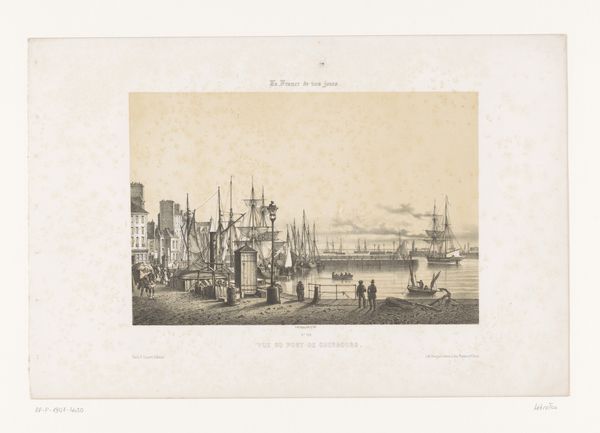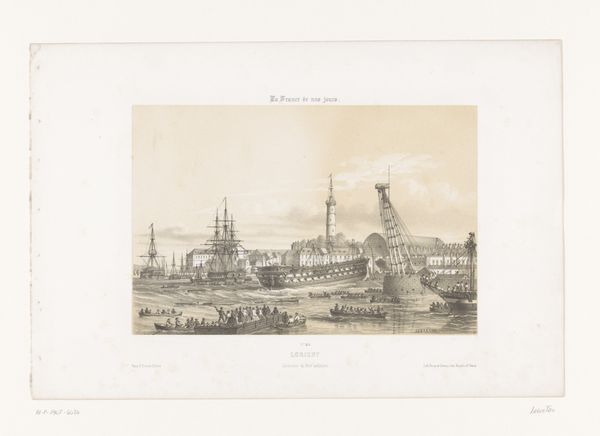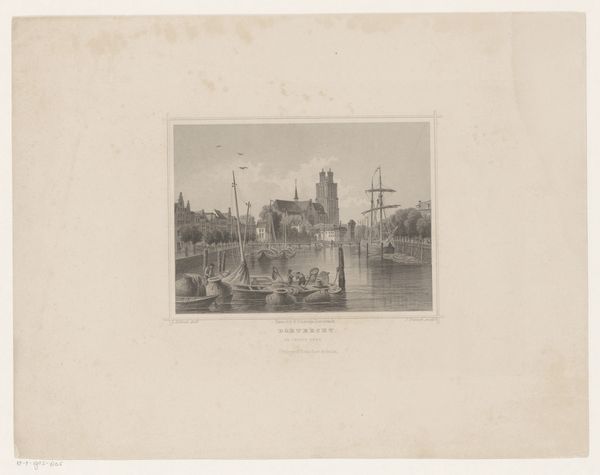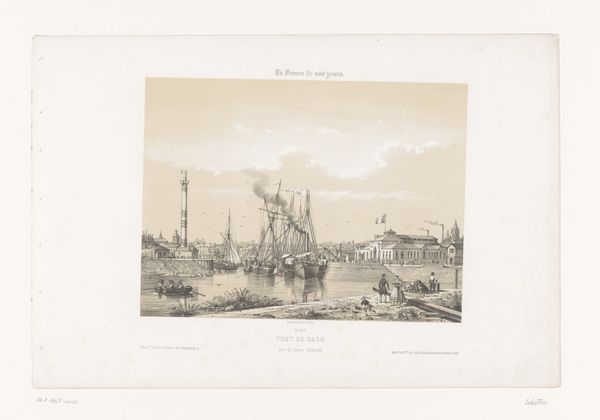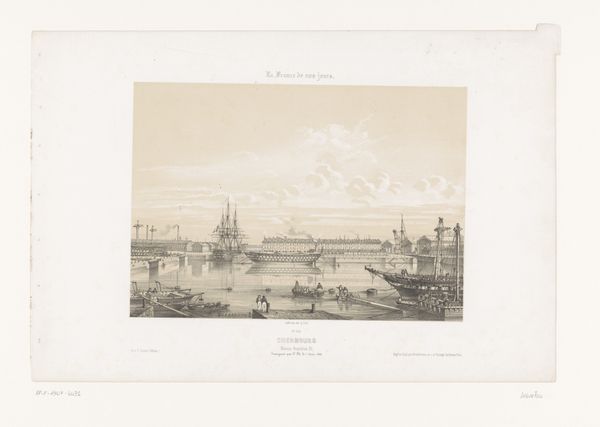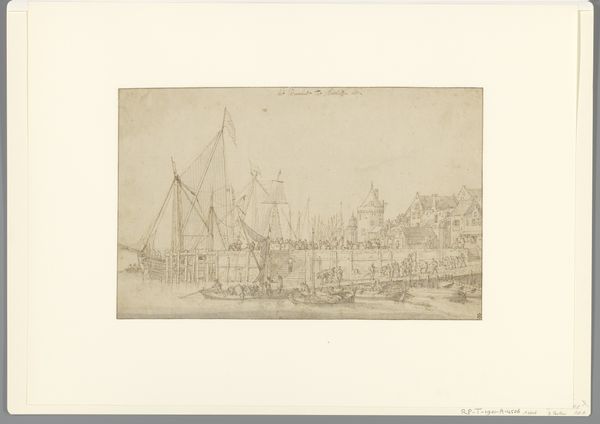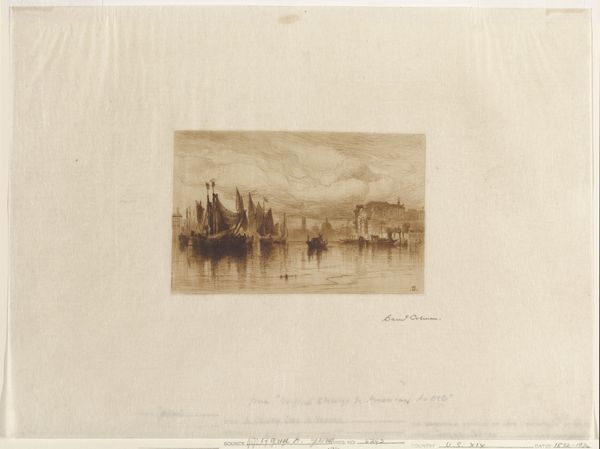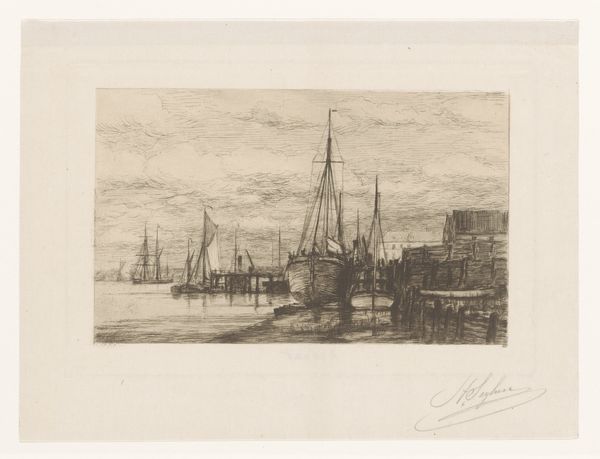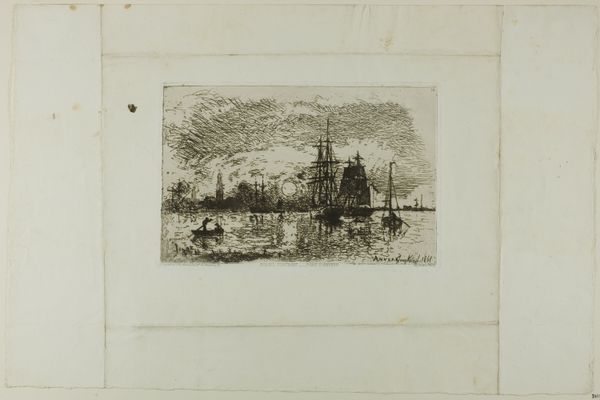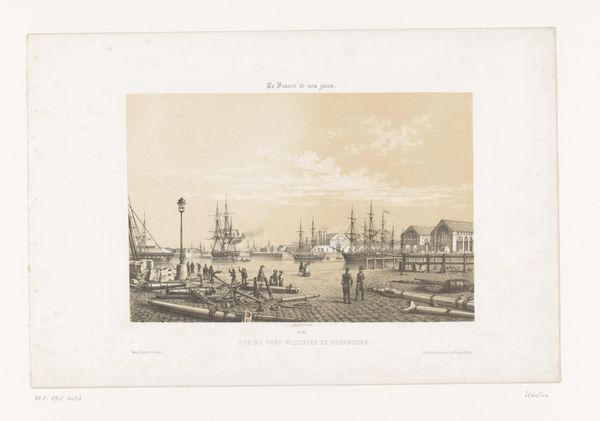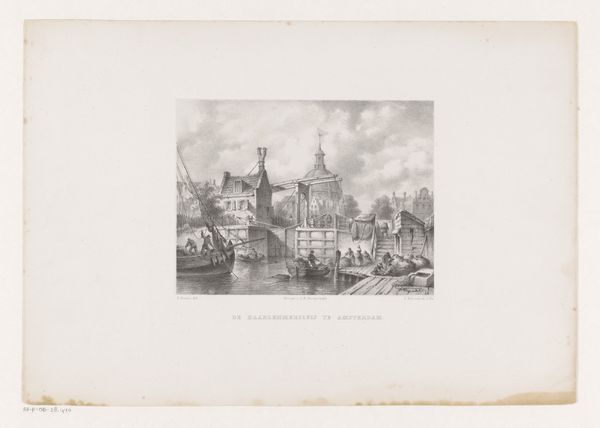
Dimensions: Plate: 6 1/4 × 9 5/16 in. (15.9 × 23.7 cm) Sheet: 10 11/16 × 14 3/16 in. (27.2 × 36 cm)
Copyright: Public Domain
Curator: We’re looking at "Commercial Basin, from L'Artiste," an etching by Auguste Ballin created sometime between 1860 and 1900. Editor: It’s striking how somber it feels. The muted tones, the dense composition, it speaks of industry but lacks a sense of bustling activity; the scene is almost melancholic, a sort of static energy hangs over the water. Curator: The etching technique allows for exquisite detail. Observe how Ballin uses the fineness of line to define the rigging of the ships. Note too, the artist’s creation of depth, carefully guiding our eye from the foreground to the horizon using varied line weight to create recession. Editor: That density you mention also points to social realities. The port wasn't merely a place of exchange; it was a nexus of power, colonialism, and labor exploitation. Those ships represent global trade networks built on inequality and extraction, hinting at the immense human cost behind this commercial activity. What appears to be a peaceful cityscape is, in fact, embedded with systemic injustice. Curator: Certainly, there’s an undeniable grandeur in the display of these merchant vessels, a testament to engineering, geometry, and design, which would appeal to patrons and buyers interested in the visual language of baroque-era art and linear construction, evident also in other Ballin landscapes and cityscapes. Editor: It is a document of its time but one also revealing of capitalism’s long shadow, of wealth creation predicated on unacknowledged and invisible social cost. The composition aestheticizes industry, obscuring those whose exploitation built it. Curator: Its power lies in how the formal elements—line, composition, tone—evoke both an accurate and aesthetic depiction. It makes visible, through representational artistry, something monumental and impressive, that offers access into late nineteenth-century French artistic tradition. Editor: True, the artwork also serves as a reminder of the crucial role art plays in mirroring, and potentially questioning, prevailing societal structures.
Comments
No comments
Be the first to comment and join the conversation on the ultimate creative platform.
